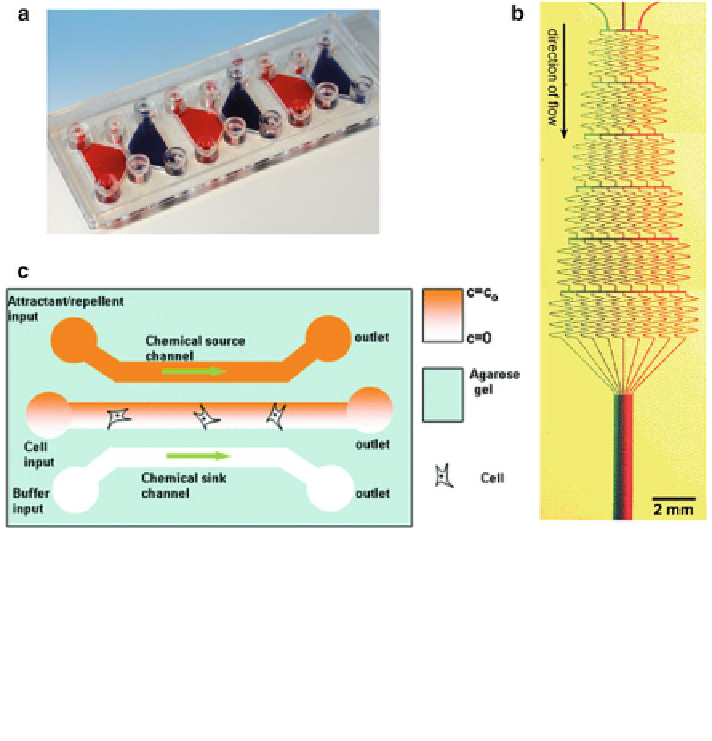Biomedical Engineering Reference
In-Depth Information
Fig. 3 Representative examples of the three different types of microfluidic devices for studying
soluble gradients. a The commercially available microslide is a static device that can maintain a
gradient for 2 days within a small channel for cell culture. b A serpentine network device can
create an arbitrary concentration profile at steady-state. Cells are directly exposed to flow [
24
].
Reprinted with permission from [
24
]. Copyright 2001 American Chemical Society. c A
restricted-flow device that uses an agarose hydrogel to shield a culture chamber from source and
sink flows, between which a linear concentration profile forms [
29
], originally published in [
29
].
Reproduced
by
permission
of
The
Royal
Society
of
Chemistry,
To address these limitations, several research groups have reported the
development of shear-minimized, or ''restricted-flow'' devices (Table
1
, Fig.
3
c)
[
27
-
29
]. In one example, Heilshorn et al. have developed a shear-minimized
microfluidic device that enables controlled, substrate-independent control of
capillary-mediated soluble gradients for use in endothelial cell chemotaxis and
sprouting morphogenesis assays [
30
]. In this device, stable gradients are formed by
exposing a culture chamber to two flowing reagent channels; one channel is a
source of fresh VEGF and the second a sink (Fig.
4
). Micro-capillaries, which
allow Fickian diffusion, inhibit convective fluid transport, thereby minimizing
shear stress on cells and substrate. The gradient that arises at steady-state depends
only on the concentration of VEGF in the source and the sink channels. The
fabricated culture chamber is further able to accommodate either an adsorbed
surface coating or an injectable 3D matrix. Therefore, dimensional context of the
culture can be varied between 2D and 3D culturing platforms to match the

Search WWH ::

Custom Search